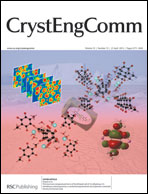Analysis of factors governing the formation of single-stranded helical coordination polymers from a macrocyclic metalloligand and Ca2+, Mn2+, Fe2+, Co2+, Ni2+, Cu2+, Zn2+ and Pb2+†
Abstract
The high rigidity, asymmetric exoditopic coordination mode, angular orientations of the coordination tops and good coordination adaptability of the metalloligand, the π⋯π stacking between the adjacent metalloligands in the polymeric chains and the coordination characteristics of the nodes are responsible for the formation of the eight 1D helices.


 Please wait while we load your content...
Please wait while we load your content...